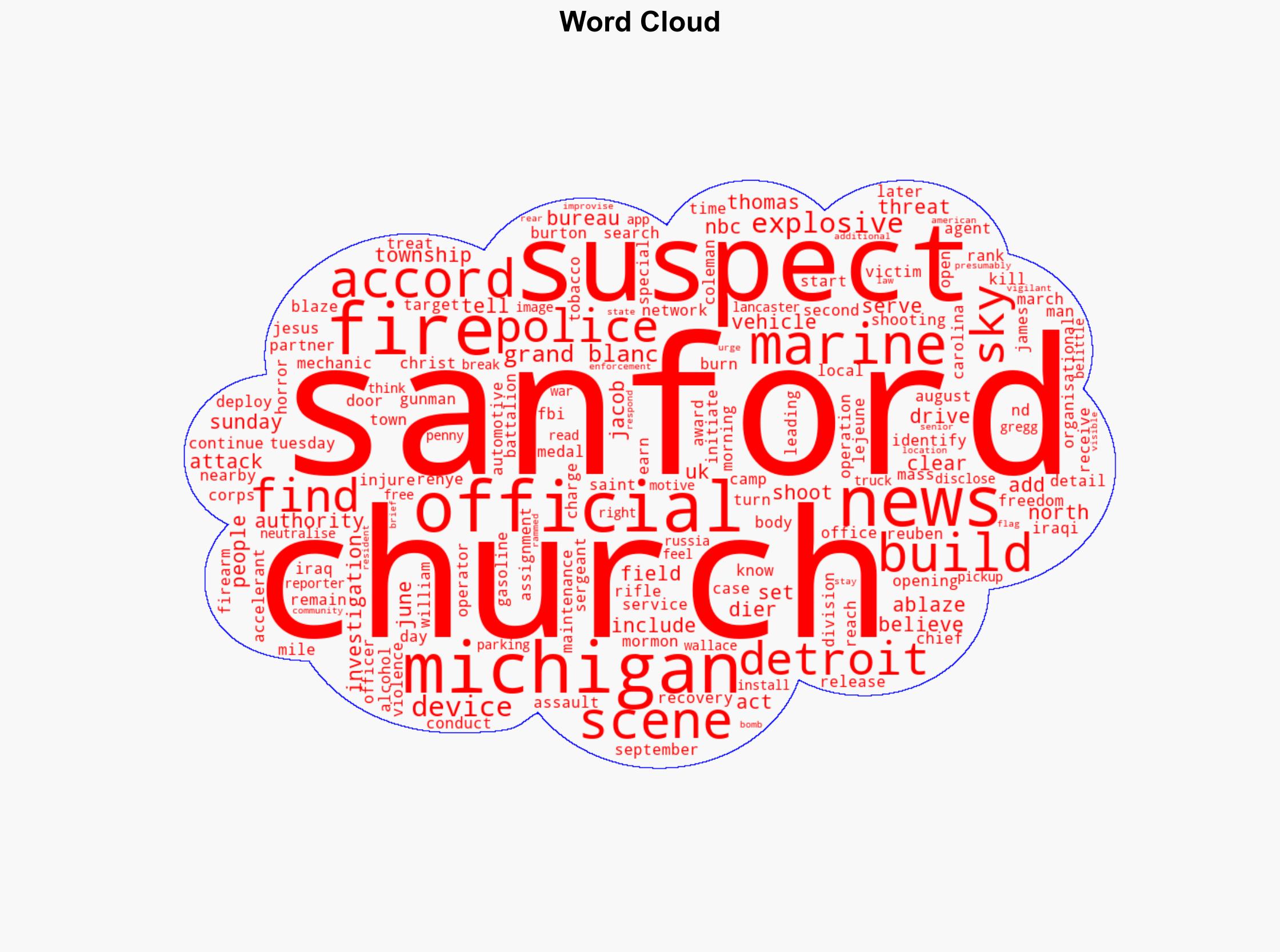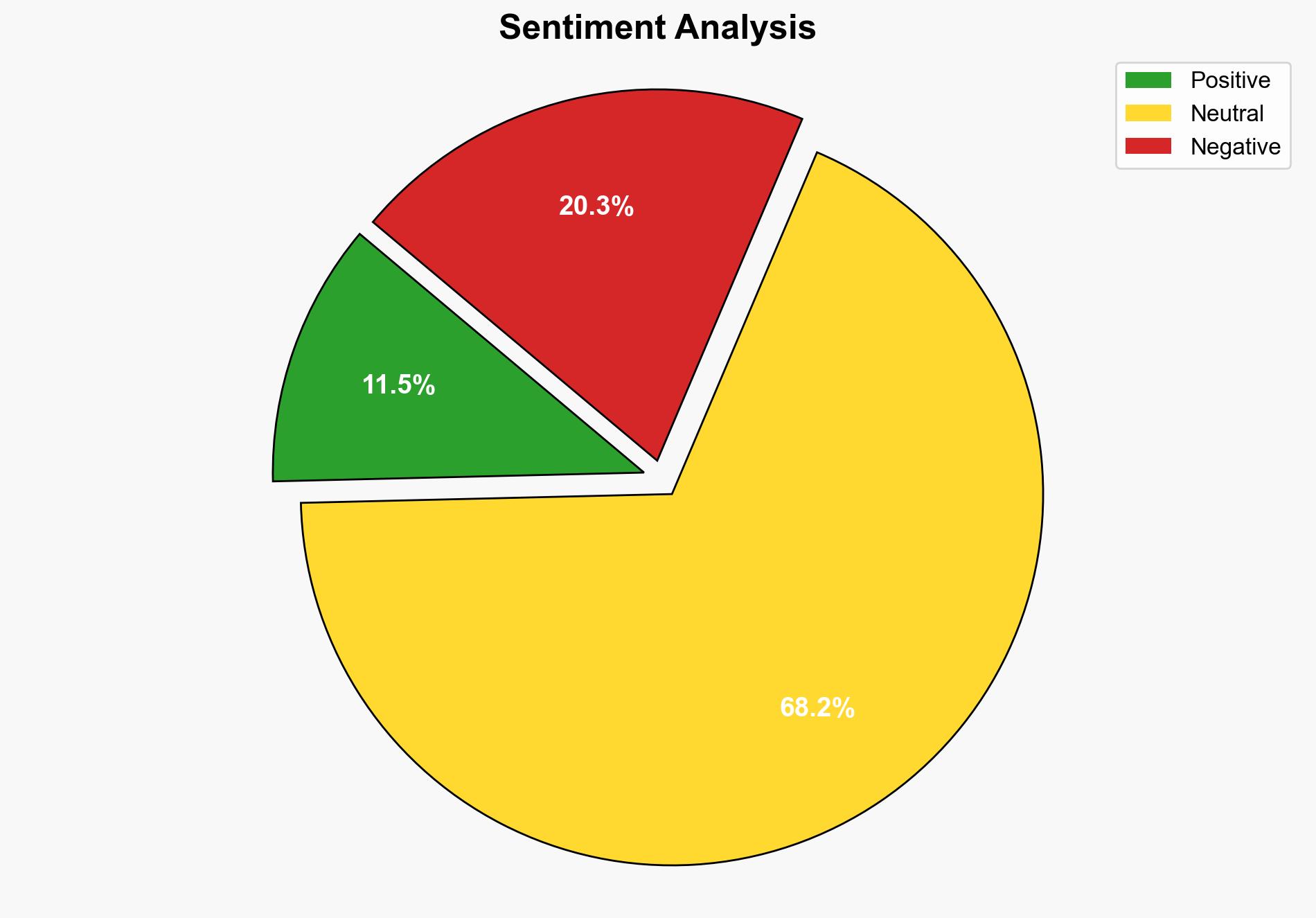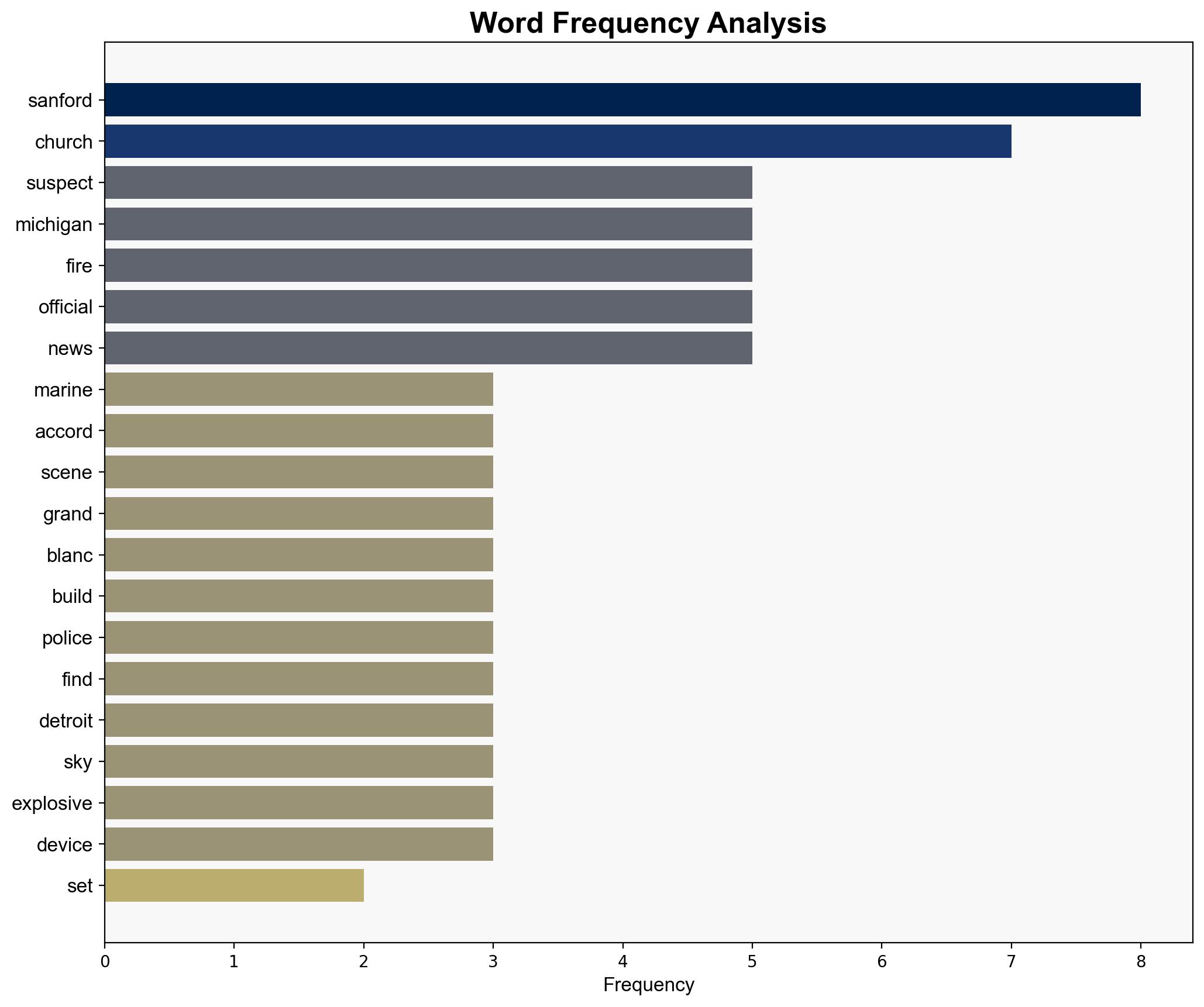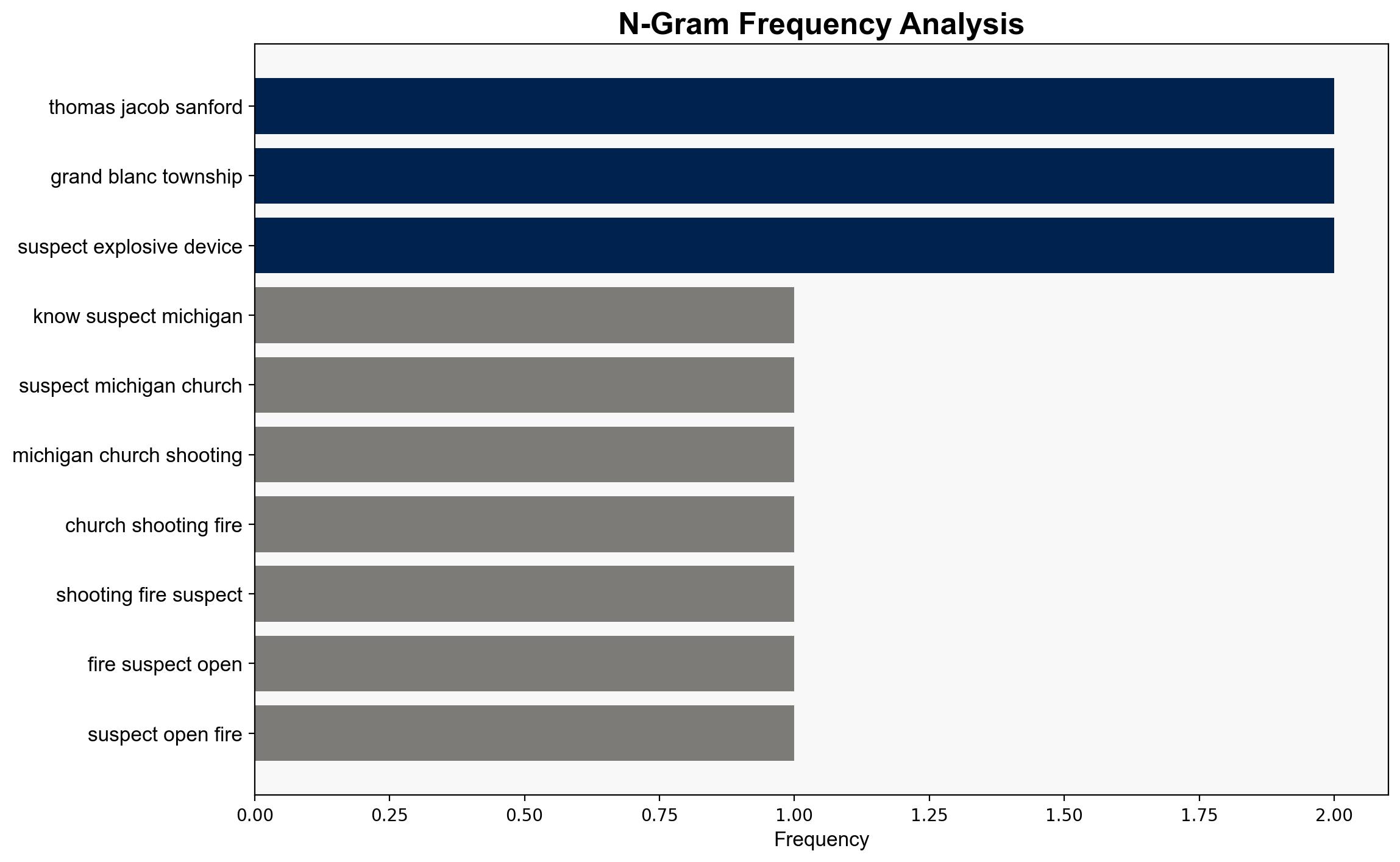What we know about the suspect in the Michigan church shooting and fire – Sky.com
Published on: 2025-09-29
Intelligence Report: What we know about the suspect in the Michigan church shooting and fire – Sky.com
1. BLUF (Bottom Line Up Front)
The most supported hypothesis is that Thomas Jacob Sanford acted as a lone wolf, driven by personal grievances or psychological issues, rather than as part of an organized group. Confidence level is moderate due to limited information on motive and potential affiliations. Recommended action is to enhance community surveillance and mental health support systems to prevent similar incidents.
2. Competing Hypotheses
1. **Lone Wolf Attack**: Sanford acted independently, motivated by personal grievances or psychological issues. This is supported by the lack of immediate evidence linking him to organized groups and his military background, which may have influenced his methods.
2. **Organized Group Involvement**: Sanford was part of a larger network or influenced by extremist ideologies. This hypothesis considers the use of an improvised explosive device and the potential for broader ideological motivations.
Using ACH 2.0, the first hypothesis is better supported due to the absence of direct links to any group and the personal nature of the attack.
3. Key Assumptions and Red Flags
– **Assumptions**: It is assumed that Sanford’s military background contributed to his capability to execute the attack. Another assumption is that the absence of a declared motive suggests personal rather than ideological motivations.
– **Red Flags**: The presence of an improvised explosive device suggests potential for broader planning or influence. The lack of a clear motive or manifesto leaves room for alternative interpretations.
– **Blind Spots**: Limited information on Sanford’s recent activities and psychological state could obscure understanding of his motivations.
4. Implications and Strategic Risks
The incident highlights vulnerabilities in community security and the potential for similar lone wolf attacks. There is a risk of copycat incidents, particularly if the attack garners significant media attention. The use of explosives suggests a need to reassess local counter-terrorism measures and emergency response protocols.
5. Recommendations and Outlook
- Enhance surveillance and intelligence-sharing among local and federal agencies to detect potential threats early.
- Implement community outreach programs focused on mental health and conflict resolution.
- Scenario-based projections:
- Best: Increased community engagement prevents future incidents.
- Worst: Failure to address underlying issues leads to further attacks.
- Most Likely: Incremental improvements in security and mental health support reduce risk over time.
6. Key Individuals and Entities
– Thomas Jacob Sanford
– James Dier
– Reuben Coleman
– William Renye
7. Thematic Tags
national security threats, counter-terrorism, regional focus, lone wolf attacks





